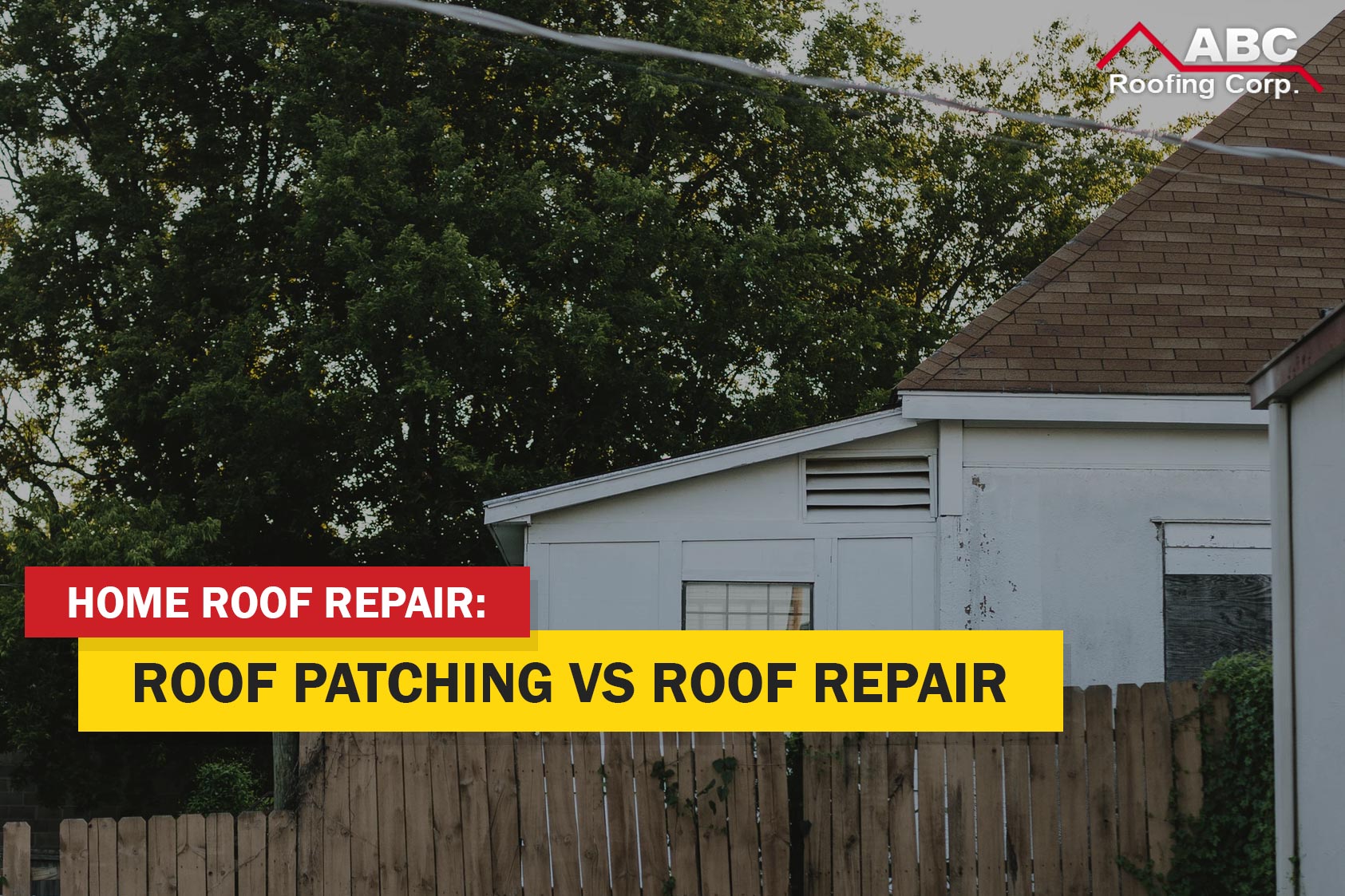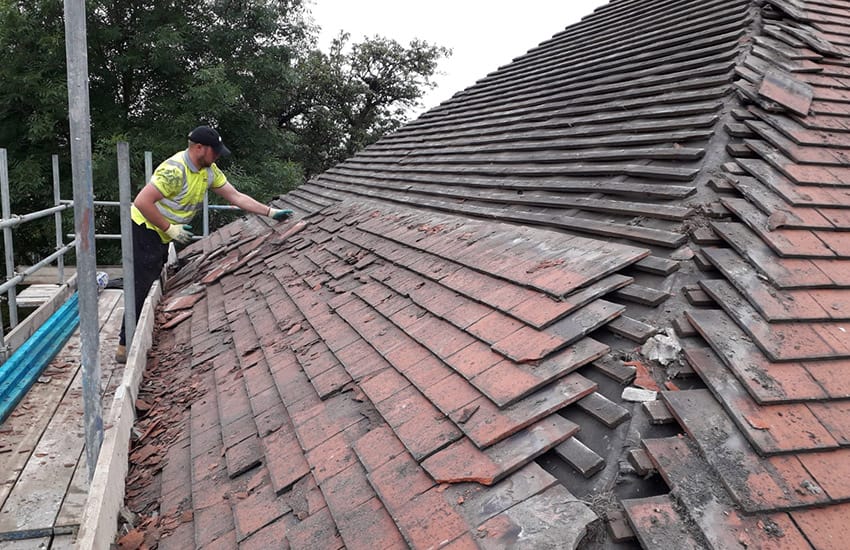Recognizing the Various Sorts Of Roof Coverings: A Comprehensive Guide for Homeowners
In the realm of homeownership, picking the proper roof covering style is a choice that carries significant ramifications for both functionality and visual charm. With an array of options-- ranging from the typical gable to the modern flat-- each type offers one-of-a-kind benefits and challenges that must straighten with the house owner's environmental considerations and details demands. Comprehending these distinctions not only help in making an enlightened option but likewise influences long-term upkeep and power efficiency. As we explore the complexities of different roof covering types, it becomes apparent that one size does not fit all; the ideal option may surprise you.
Gable Roofs
Saddleback roofs, characterized by their triangular form, are among the most popular roof covering designs as a result of their simplicity and effectiveness in losing water and snow. This style features 2 sloping sides that satisfy at a ridge, allowing for efficient drain and minimizing the danger of water accumulation. The steep pitch typically connected with gable roofing systems enhances their ability to deal with hefty precipitation, making them appropriate for different climates.
In addition to their functional benefits, gable roof coverings supply visual adaptability. They can be adapted to different building styles, from standard to contemporary homes. The layout can likewise suit additional attributes such as dormer home windows, which enhance natural light and ventilation in the attic room area.
Furthermore, gable roofings supply enough space for insulation, adding to power efficiency. Homeowners can select from a range of roof covering products, consisting of asphalt tiles, steel, and floor tiles, even more enhancing customization alternatives.
In spite of their advantages, gable roofs may call for added support in locations vulnerable to high winds or heavy snowfall. In general, the saddleback roof remains a popular option because of its mix of capability, resilience, and visual charm.
Apartment Roofs
Level roofings are often recognized for their minimal style and sensible applications, specifically in industrial and commercial setups (oahu roofing). These roofing systems feature a straight or nearly horizontal surface area, which permits easy building and construction and versatile area usage. While they might lack the visual charm of angled roofs, flat roof coverings use many benefits, specifically in city atmospheres where making best use of area is essential
One of the main advantages of level roofing systems is their access. House owners can utilize the roofing system space for various functions, such as roof yards, balconies, or photovoltaic panel setups. Furthermore, flat roofing systems are generally extra cost-efficient to keep and install compared to their sloped equivalents, as they need fewer products and labor.
Nonetheless, flat roofings do present certain challenges. Correct drainage is important to stop water merging, which can bring about leakages and structural damages. Hence, selecting top quality waterproofing products and regular examinations are important for guaranteeing longevity. Common products made use of for flat roofing systems consist of built-up roofing (BUR), changed asphalt, and single-ply membranes, each offering distinctive benefits. On the whole, level roofings serve as a useful and versatile choice for many property owners and services alike.
Hip Roofings
Hip roofs are identified by their sloped sides that merge at the top, creating a ridge. This design stands out from saddleback roofs, as all 4 sides of a hip roofing slope downwards toward the wall surfaces, giving an extra secure framework. The you could look here angle of the inclines can vary, enabling versatility in building aesthetics and functionality.
One of the key benefits of hip roofing systems is their capability to withstand hefty winds and damaging weather problems. The sloped surface areas allow better water drain, decreasing the risk of leaks and water damage. Additionally, hip roofs offer raised attic room area, which can be utilized for storage and even exchanged comfortable locations.
Nonetheless, creating a hip roofing system can be extra pricey and complex than less complex roof covering kinds, such as gable roofings. The extra material and labor involved in producing the inclines and making certain correct architectural stability can result in higher expenses. Despite these downsides, several property owners prefer hip roofings for their toughness, visual appeal, and capacity for energy efficiency.
Mansard Roofs
Mansard roof coverings, usually acknowledged by their one-of-a-kind four-sided layout, attribute 2 inclines on each side, with the lower incline being steeper than the upper. This architectural style, stemming from France in the 17th century, is not only visually appealing yet useful, as it maximizes the functional area in the top floors of a building. The high reduced slope allows for even more headroom, making it an ideal choice for lofts or attics, which can be transformed right into living spaces.
Mansard roofings are defined by their flexibility, suiting various architectural designs, from traditional to contemporary. They can be constructed with different materials, consisting of asphalt roof shingles, slate, or metal, supplying property owners with a series of options to suit their choices and budget plans. In addition, the layout allows for the integration of dormer home windows, improving all-natural light and ventilation in the upper levels.
Nonetheless, it is vital to consider the prospective drawbacks. Mansard roofs may call for more maintenance due to the intricacy of their layout, and their steep inclines can be testing for snow and rainfall drainage. In roof repair oahu general, mansard roofing systems combine style with practicality, making them a popular choice among home owners looking for unique building features.
Shed Roofings
As property owners increasingly look for simpleness and functionality in their building designs, lost roofing systems have emerged as a popular option. Identified by a solitary sloping plane, a shed roof offers a minimalist aesthetic that complements various home styles, from modern to rustic.
Among the main benefits of a shed roof covering is its straightforward building and construction, which frequently translates to lower labor and material prices. This design allows for effective water drainage, decreasing the risk of leakages and water damage. In addition, the vertical slope supplies ample area for skylights, enhancing all-natural light within the interior.
Lost roofs likewise provide flexibility in terms of usage. They can be successfully integrated into additions, garages, or outdoor frameworks like pavilions and sheds. Furthermore, this roof covering design can accommodate numerous roofing products, consisting of steel, asphalt shingles, or also environment-friendly roofs, straightening with environmentally friendly efforts.
Nonetheless, it is essential to consider local environment problems, as hefty snow tons may necessitate changes to the roof's angle or framework. Generally, shed roofings offer a useful and visually pleasing option for property owners wanting to optimize capability without compromising design.
Conclusion


Gable roof coverings, identified by their triangular form, are among the most prominent roof covering designs due to their simpleness and effectiveness in shedding water and snow. oahu roofing. The steep pitch frequently associated with gable roofing systems enhances their capacity to take care of hefty rainfall, making them appropriate for various climates
While they may lack the visual allure of pitched roofs, level roofs offer many benefits, particularly in metropolitan atmospheres where taking full advantage of space is critical.
